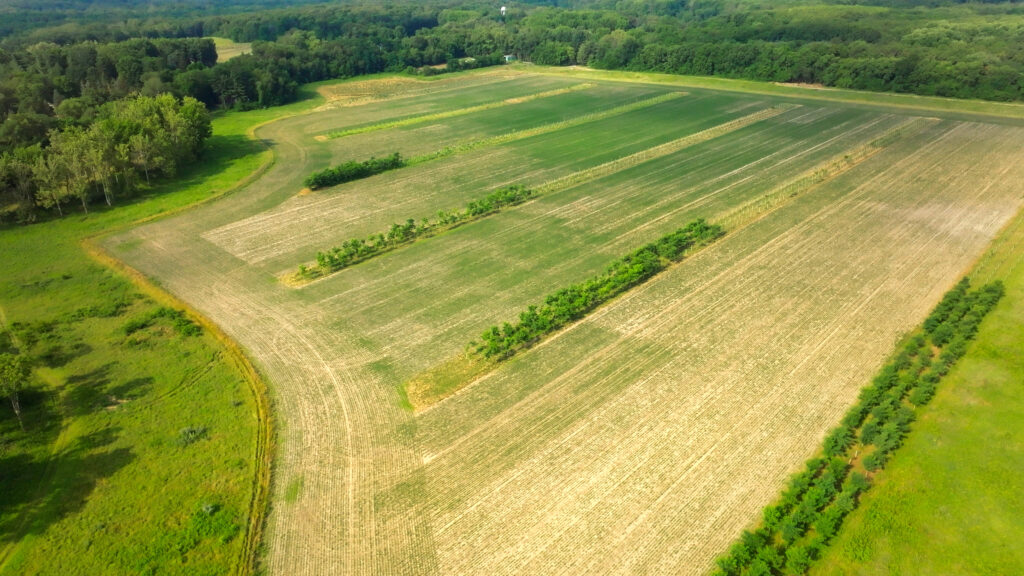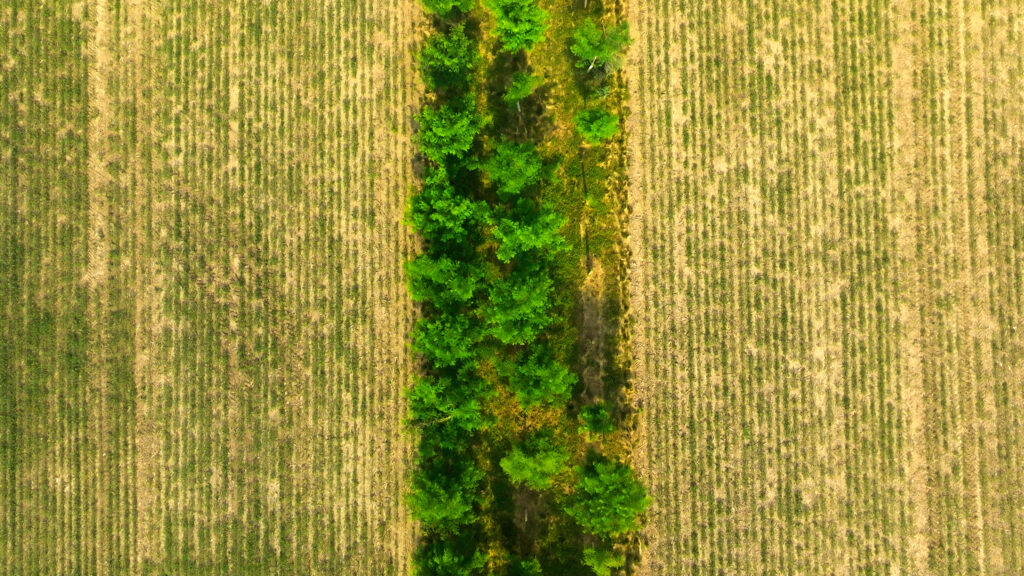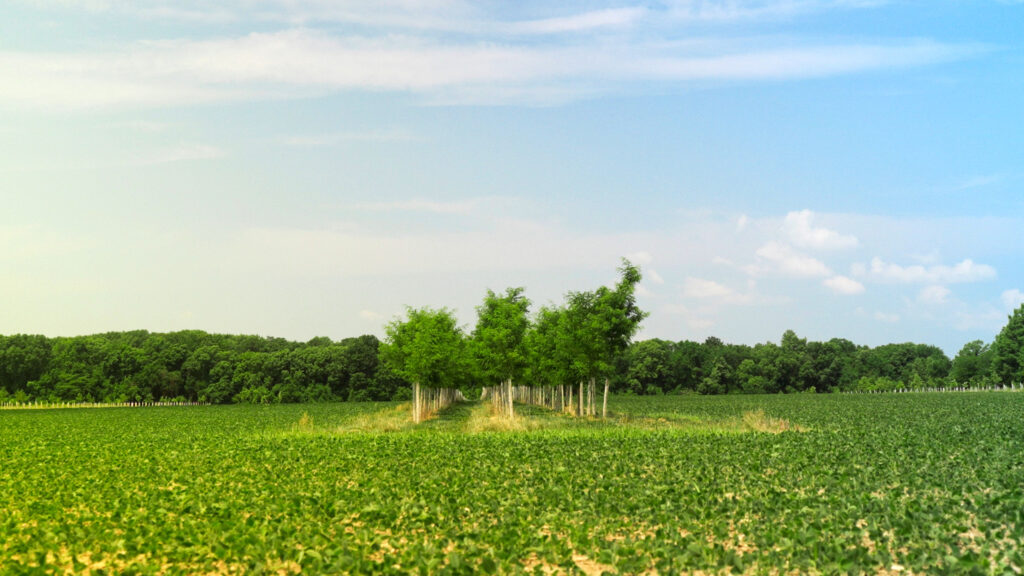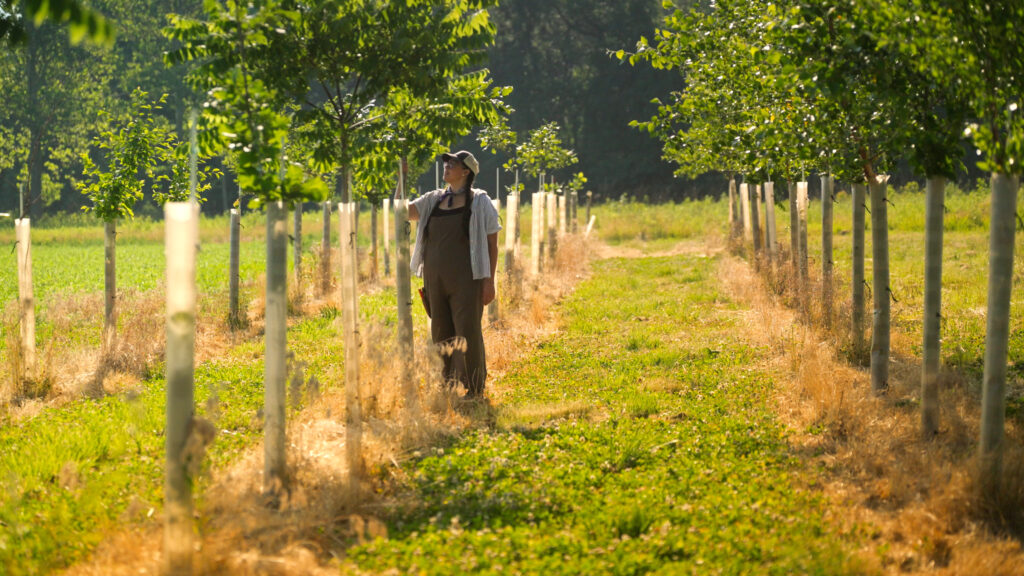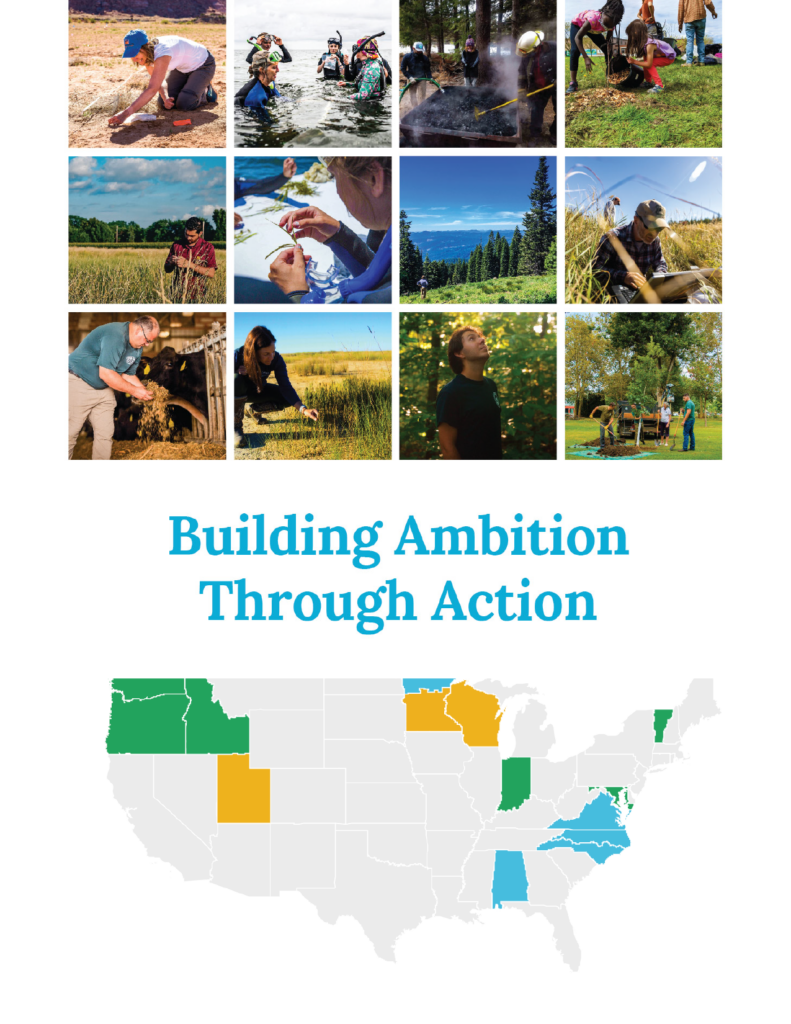Last updated on March 11th, 2024

Most people have no idea what agroforestry is. And they especially don’t know what it looks like. Displaying agroforestry on demonstration farms allows people to understand how trees fit into farm landscapes.
As the Director of Demonstration Farms at the Savanna Institute, a nonprofit organization working to lay the groundwork for widespread agroforestry in the Midwest, I help people better understand what agroforestry is, as well as the multiple benefits it can provide to farmers. Demonstration farms can serve as a blueprint for how the U.S. Department of Agriculture’s programs and policy initiatives, like the 2023 Farm Bill, could support the expansion of agroforestry plantings.
Agroforestry 101
Agroforestry has a lot of definitions, but simply put, it’s the integration of trees into agriculture. By this definition, agroforestry has been practiced for thousands of years, and in thousands of different ways, across the world. A few key practices are especially promising for the Midwestern United States, such as alley cropping (rows of trees growing within rows of crops) and windbreaks (rows of trees planted along the edges of fields to reduce wind, pesticide drift and soil erosion).
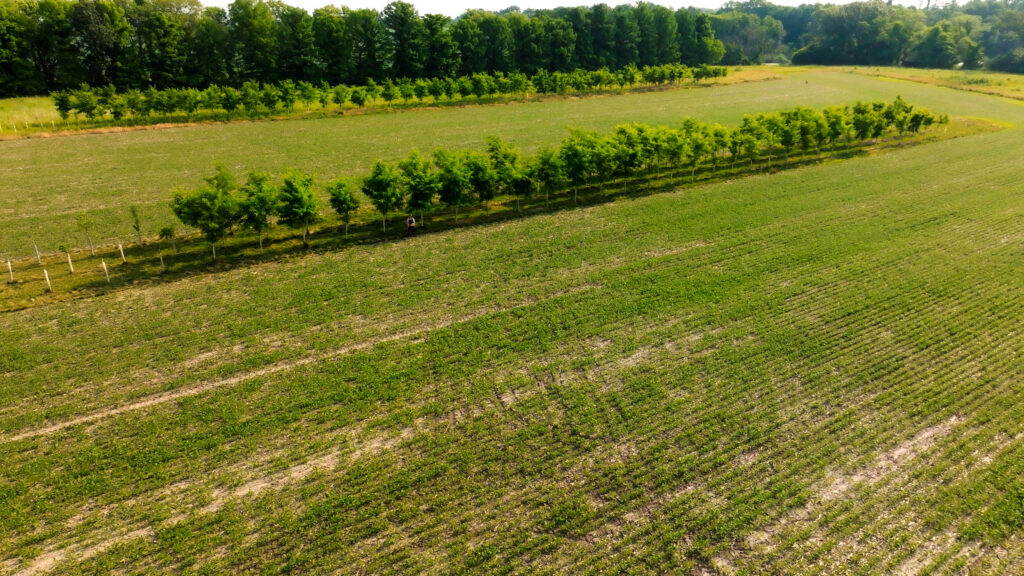
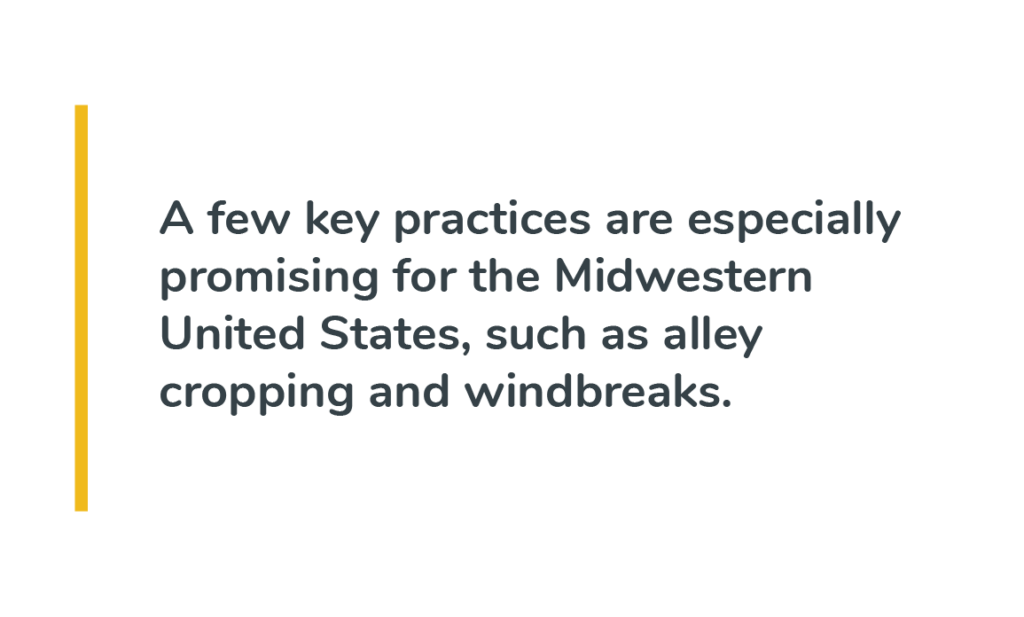
So much of our country’s landscape now is foreign to what it looked like 30 years ago, 50 years ago, 100 years ago, and 300 years ago. All the amazing soil that we have here in the heartland is because of the prairies and savannas that were here. This history is extremely important, because while ‘agroforestry’ can be seen as a set of USDA practices, it’s way more than that. It’s generations of people that have been working with trees up to the present day. So, agroforestry is not only directly related to what happened in the past, but it directly informs what will happen in the future.
Agroforestry’s Role in Preparing for Climate Change
As we’re entering this time of uncertain weather patterns, farmers sometimes have no rain at all. Other times, an incredible amount of water comes onto farm landscapes all at once. Trees can play an important role in navigating this challenge. The amazing thing about trees is they have deep root systems that allow water to spread out and sink in. The perennial roots of tree crops allow them to mitigate the impacts of extreme weather while also sequestering greenhouse gases and reducing climate change directly.

Because of the powerful role that trees can play on farm landscapes, agroforestry has everything to do with climate change. Trees are some of our most powerful allies we have when it comes to adapting and mitigating a changing climate. There’s nothing more efficient than a tree when it comes to storing carbon at deep levels of soil where we need to hold it in place. And what makes trees even more exciting is they can be productive. We can put trees on landscapes in a way that is doing something for climate change, but also adding value to farmlands, either through conservation or through the production of new crops.
Drought and Planning
I have seen first-hand the impacts a changing climate is already having on farmers. Through my work at the Savanna Institute, I manage the Hudson Demonstration Farm, a privately owned, 120-acre farm in central Illinois that serves as an agroforestry demonstration site through an innovative 50-year lease agreement with the landowner. Agroforestry is being established on all of the 120 acres, in combination with corn, soybeans, and other common Midwestern crops. In 2023, a severe drought created challenges for our agroforestry work, as well as for the alley crop farmer’s soybean production.
Even though farms in Central Illinois are seeing the driest soil we’ve had since the eighties, the trees we planted here are doing just fine, and even trees that were planted as recently as last year seem to be doing reasonably well thanks to deeper roots that can access moisture farther down in the soil. The crops that are struggling most with the drought are annual crops, like the corn and soybeans that are grown across much of Illinois and the Midwest. However, growing trees close to these annual crops can actually help them access water too, by drawing up moisture higher in the soil profile where shorter crop roots can access it.
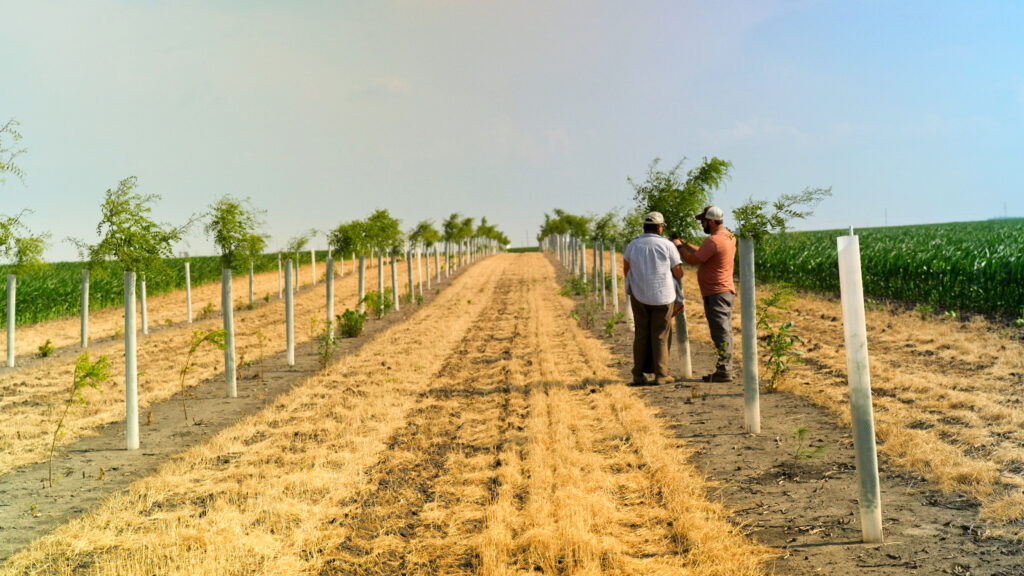
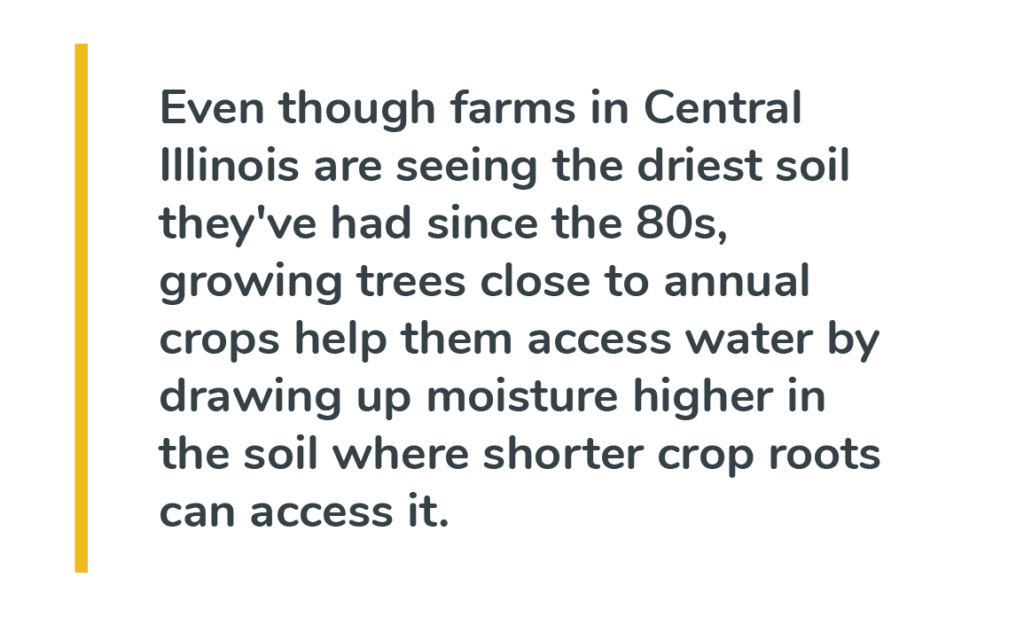
While this drought has led to challenges, it has also provided an opportunity to demonstrate how to farm in an increasingly chaotic climate. The future of agriculture is happening right now on these demonstration farms. As the weather gets more extreme, farmers will be forced to do things differently.
On-Farm Education
For agroforestry to gain broader acceptance, it is important for it to be highly visible. Demonstration farms can play a powerful role in bringing people out to learn more about agroforestry.
The Savanna Institute utilizes Hudson Farm, along with its broader network of demonstration farms throughout the Midwest, to conduct education and outreach for greater agroforestry adoption. This includes field days, private tours, research, an agroforestry apprenticeship program, and a new video series about the farms.

This education is very important, because agroforestry requires the thoughtful management of multiple systems at once, such as tree crops in combination with grains, vegetables, or livestock. This offers the potential for “overyielding” – achieving productivity above 100% due to multiple crops in the same space – but it also increases the number of things that can go wrong. Our demonstration farms help us find ways to co-exist, while also providing opportunities to document and learn from our mistakes, so others don’t make the same mistakes again.
One of the reasons why I’m drawn to this work is because we are showing that the corn and soybean production with large tractors guided by GPS and increasingly advanced technology can exist alongside the use of trees. The future of agriculture is to do both. Both of these things CAN happen at the same time.

Costs and Barriers
Why isn’t agroforestry more common in the Midwest? A number of significant barriers stand in the way. Land access for aspiring agroforesters, either through land ownership or a favorable long-term lease, remains out of reach for many. Because tree crops usually require significant up-front capital and labor investment with no immediate payback, providing financial mechanisms to fund agroforestry establishment is a primary need. A shortage of nursery stock for preferred agroforestry crops, as well as a lack of farmers with sufficient agroforestry management experience, also represent limiting factors.
For example, if a farmer is planting a chestnut tree, that tree is not going to produce its first chestnuts for around five years, and they’re not going to come into full production until around their twelfth year. This means that farmers are required to make a significant investment of time, labor, and money before those trees start to produce, which can be really hard when operating farms on tight margins. In Midwest agriculture, we’re usually focused on short-term economics instead of long-term economics, and that can be a barrier for some farmers.
Another barrier is that there simply are not a lot of people doing agroforestry. A person might be the only one in their community that’s planting tree crops or doing agroforestry on their farm, and that can get really lonely after a while. Hopefully as we spread the word about agroforestry, this will become less of a barrier for agroforestry adopters.
USDA Support for Agroforestry
While some of these barriers can be addressed by organizations like the Savanna Institute, others require innovation by policymakers or financial institutions. The U.S. Department of Agriculture (USDA) can be a powerful change agent in scaling up widespread implementation of agroforestry, and a number of USDA programs are already supporting its adoption. Through the Natural Resources Conservation Service (NRCS), landowners can access cost share funding for the cost of planting trees, as well as the loss of income from taking land out of annual production.
Indeed, at the Hudson Demonstration Farm, the USDA helped pay for every tree that was planted. At Hudson, the NRCS’ Conservation Reserve Program (CRP) supports the establishment and maintenance of the windbreak and pollinator plantings while the Regional Conservation Partnership Program (RCPP) supports three different types of alley cropping. The Environmental Quality Incentives Program (EQIP) can also help pay for costs associated with Agroforestry establishment. EQIP is a particularly powerful program for people that may not have commodity crop land, including specialty crop growers or livestock producers who want to establish agroforestry.
SUPPORTING FARMERS The USDA can be a powerful change agent in scaling up widespread implementation of agroforestry, with programs like the Conservation Reserve Program, the Regional Conservation Partnership Program, and the Environmental Quality Incentives Program helping farmers with the establishment and maintenance of practices like alley cropping and windbreaks. Photos by Alita Films.
Another USDA effort, the Partnership for Climate Smart Commodities program, is pulling together people working in agroforestry into regional hubs that allow us to scale agroforestry where they are located and deploy it throughout the United States. Led by The Nature Conservancy in collaboration with multiple partners, this five-year grant establishes six regional hubs in the eastern US and Hawaii. Agroforestry currently represents less than 2% of U.S. agriculture. This project aims to create 30,000 acres of new agroforestry plantings over the next five years.
In 2023, Congress has the opportunity to expand the USDA’s support for agroforestry through the Farm Bill, legislation that touches the life of every single person in the US, whether we know it or not. When it comes to agroforestry, there is a major opportunity to put in place a transformative Farm Bill, providing opportunities to tweak some existing programs to make them more friendly to agroforestry, while also providing additional funding for agroforestry research, technical assistance, and adoption. It is vital that we let policy makers know that agroforestry is important to us, that it is a climate change solution, that it is an economic opportunity, and that historic investment will help accelerate that adoption even faster.
Returning to Agroforestry
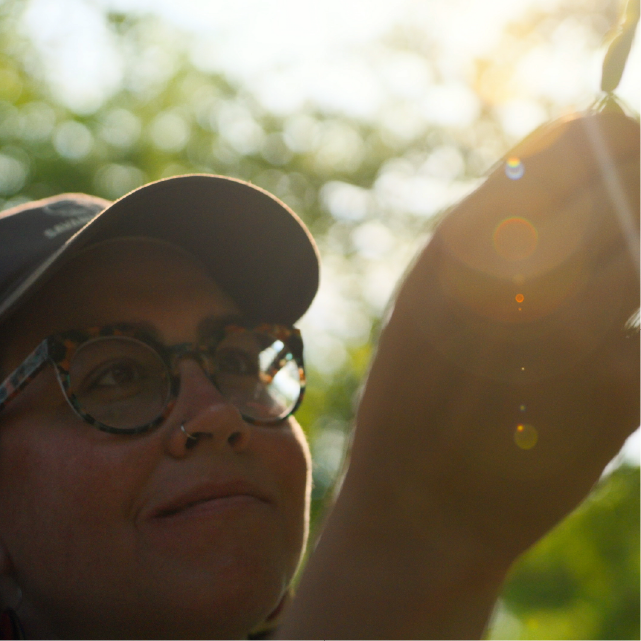
Despite dealing with the consequences of climate collapse on a daily basis, I am still hopeful about the future. As a parent, I sometimes feel that having children and planting trees is part of the same work: fostering a better, brighter, more stable future. A few years back, I was out working on an agroforestry farm and heard a bobwhite quail call from the windbreak. I started weeping, right there in the field, because I hadn’t heard that sound since I was a child. Through planting trees, that farm had built a habitat for a bird that no longer existed in the area and they came back. Being able to watch the land change, regenerate, and diversify thanks to agroforestry fills me with the same emotions as watching my children grow.
I think that trees have the opportunity to bring people back to the land, to farms, to their communities and rural areas, and to places where they feel like they can be hopeful and that they can build their lives around that. And while planting a tree is simple, it’s the first step in that transformation.
Additional Resources
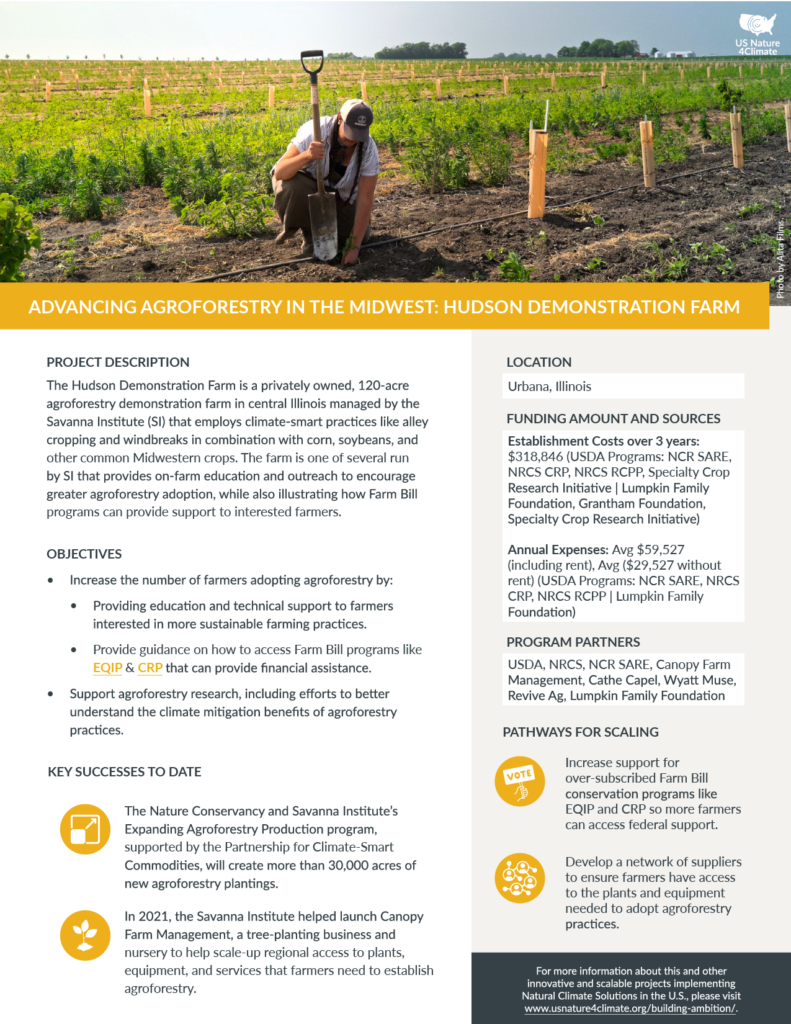
Download project fact sheet
(includes pathways for scaling)
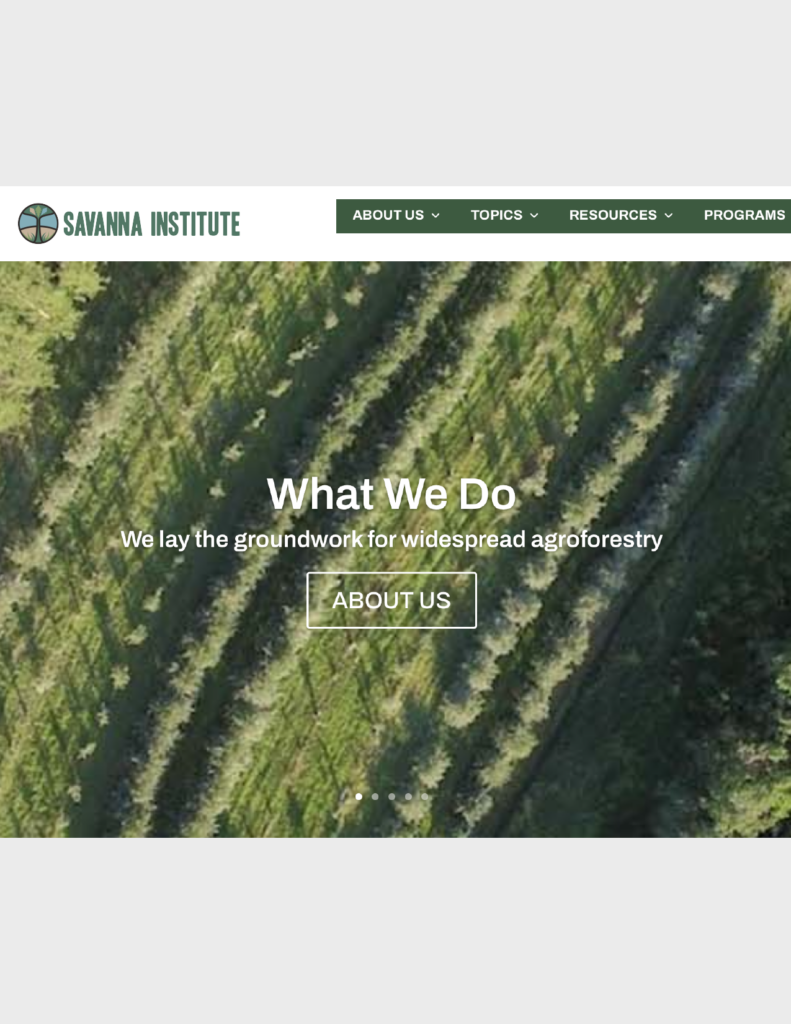
Learn more about the Savanna Institute

